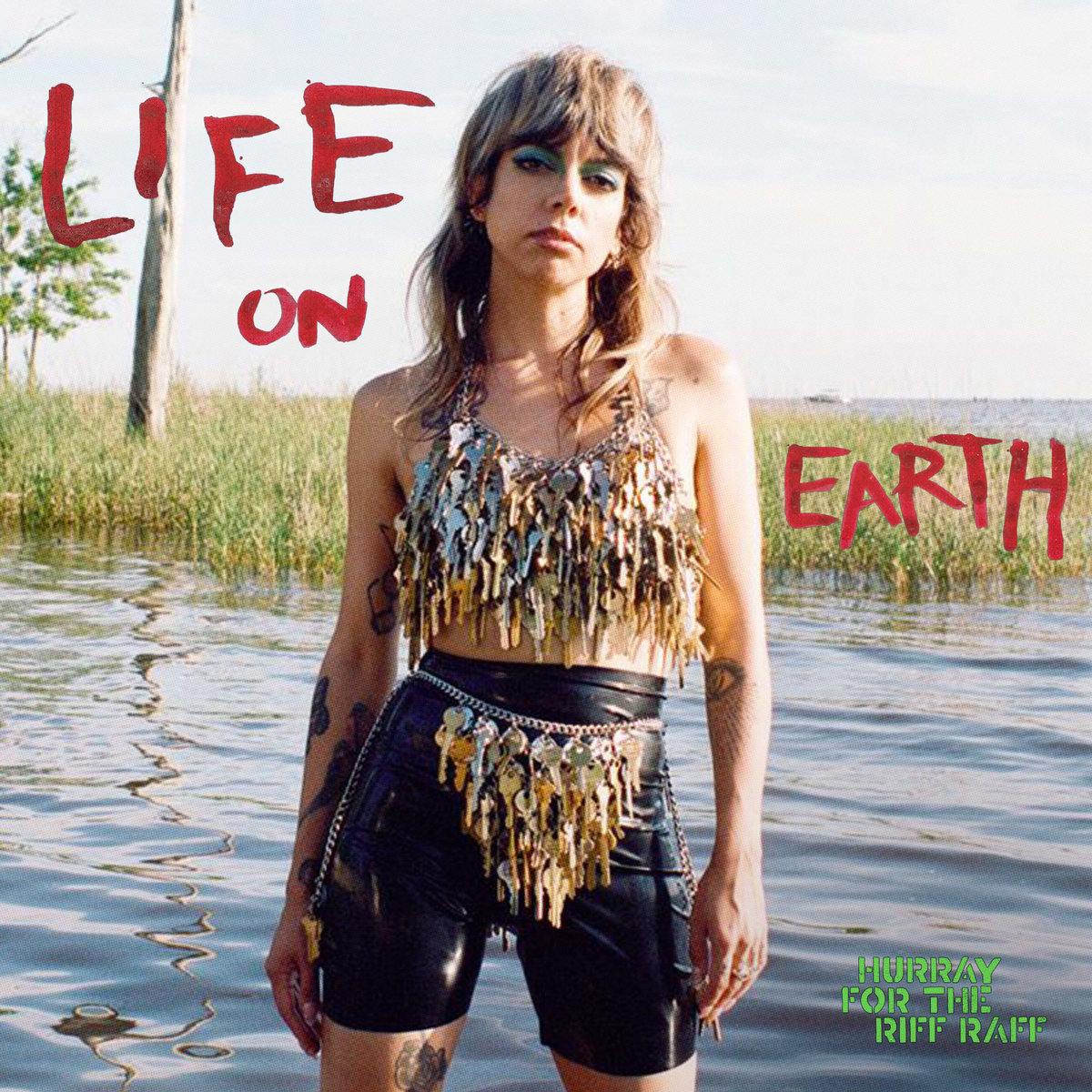Hurray for the Riff Raff
Life on Earth
NONESUCH
I have to be honest, I really don’t want to hear musicians speak. I don’t mean on Talkhouse or Fresh Air or between songs at a KEXP in-studio session—I mean on record, in their songs. Any time an artist peppers in some spoken word, I find myself tempering an overwhelming instinct to skip. After all, why crawl when you can fly? Why talk when you can sing? And yet, I could listen to Hurray for the Riff Raff’s Alynda Segarra read the damn phonebook, so what do I know?
The truth is, there isn’t even that much spoken word on their new record, Life on Earth. There is, though, a kind of spoken-word feel, an absorbing force, a quiet, subdued space that exists between every synth blast, every rhythm, every soaring chorus. It’s a space Segarra simply owns, drawing you in, wrangling every stray thought until you’re there, intently listening to whatever they might say, of which they have a lot.
If that sounds a bit heavy, it’s because it often is. Segarra has never been an artist for the faint of heart, but Life on Earth is their most sober and urgent work to date. These are songs meant to not only convey a feeling, but to compel you to share it, which can be a taxing proposition. Heartbreak, ICE facilities, mourning, trauma—these are the raw materials Segarra works with. There are songs that inspire movement, to be sure, but none that can rightly be called fun. There’s no winking, no acknowledgment, no hedge against the somber, no refraction of the world’s ugliest reflections. The middle of Life on Earth, in particular, doesn’t seem like it should work as well as it does. The one-two punch of “LIFE ON EARTH” and “nightqueen” is more dirge than folky, weighty and stolid in a way that should bore but instead arrests. Segarra’s not interested in diversion, but the real power of the record is that it really doesn’t give you the choice.
Press materials for Life on Earth market it as a departure for Segarra and the band, and while that may be true, it’s more a departure among departures than some distant outlier. For Segarra, who was hopping trains and hitchhiking around the country by age 17, transience seems more the status quo than any kind of stasis. Instead, it seems, the lack of movement might be what’s shifting their perspective this time around. Opener “Wolves” addresses this head on. While Segarra appears to urge herself on—“Run babe, you know how to run,” they sing in a cascade of ghostly vocals—it's the repetition that betrays a crumbling foundation. Yes, they know how to run, but the question begged is whether they can find a way to stay, a question they seem reluctant to ask much less answer.
Segarra and company take a similar tract musically. What started out as a strictly folk songwriter project has allowed for bits of punk and various influences tied to their native Puerto Rico to find their way into the formula, shifting Segarra from a disciple of an artist like Gillian Welch into something wholly their own. Through the “nature punk” of lead single “RHODODENDRON,” to the towering defenselessness of “PIERCED ARROWS” and trip-hop storytelling of “PRECIOUS CARGO,” Segarra is expanding in seemingly every direction at once on Life on Earth, working in the new while retaining the old. But again, none of it quite so well without the ineffable power they hold as vocalist and storyteller. Segarra has more than ever to say on Life on Earth, and the unique power to get you to listen.







